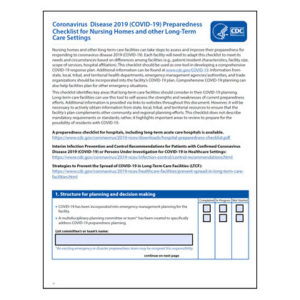Strategies to Foster Successful Leadership in Senior Living Staff

Tracy Duberman, PhD, president and CEO of The Leadership Development Group
Talented, quality leaders are integral to any operation’s success, including that of a senior living community. Given the staffing challenges the senior care industry faces, it’s essential for communities to learn how to recognize and foster leadership talents within their staff.
Tracy Duberman, PhD, president and CEO of The Leadership Development Group, and Kathy Bernhard, a senior consultant at The Leadership Development Group, specialize in helping organizations in the health industry learn to do just that. Duberman and Bernhard shared some advice with us to help senior care communities successfully foster leadership in staff.
The Challenges in Fostering Leadership
It’s essential that senior care communities are able to foster and develop strong leaders. “Organizations don’t survive unless they’ve invested in developing their leaders and teams in ways that enable them to execute on their strategic priorities,” explains Duberman. But the senior care industry faces some unique challenges in developing leaders.
“There is so much urgency in dealing with the tactical tasks at hand,” says Bernhard. “It’s very easy to get caught up in the details and lose sight of the bigger picture.” Leaders need to be able to identify staff who have the capability and who aspire to one day take on a leadership position. Those future leaders need to be able to focus not only on the details of daily operations, but to also see the big picture.
Learning agility is also a key trait in leaders. “People with learning agility don’t just live through experiences, but actually identify patterns and extract meaning from those experiences,” Bernhard explains. “It enables them to figure out what to do when they don’t know what to do much more quickly than other people.” Communities that can screen for learning agility and then put those employees into front line and leadership roles can foster their leadership potential.
Effective Ways to Foster Leadership in Staff

Kathy Bernhard, senior consultant at The Leadership Development Group
Bernhard explains that it’s possible to structure the interview process to identify learning agility by adding specific questions. Rather than asking a candidate to tell you about an experience, ask what they learned and whether it confirmed or contradicted what they already knew. Follow up by asking if the candidate has since had the chance to apply the lesson to another situation.
She also recommends that instead of asking hypothetical questions, you should ask a candidate to tell you about a time when they actually did something. “It’s easy to give a textbook answer of how you would do something in a situation, but it’s something else to be in the moment and deal with the conflict effectively,” Bernhard explains. She encourages communities to use interviews as an opportunity to look for key qualities like resilience, agility, and emotional intelligence.
According to Duberman, creating a coaching culture can support staff as they develop their leadership experience. A coaching culture refers to a psychologically safe environment for individuals to be able to fail safely, building their leadership skills in the process. “Giving feedback on a regular basis and engaging those individuals to ask for feedback from their stakeholders is very important relating to learning and development,” Duberman says.
“Great organizations have programs established that include sponsorship,” she says. Individuals in an organization aren’t necessarily mentors to staff, but more adopt the approach of “It is my role as a sponsor to create conditions for your success in this organization.” In a sponsorship role, a sponsor might advocate for the staff member to be given stretch assignments or new positions that might be outside of their comfort zone.
“Organizations that do this the most effectively are those that take the time to step back and identify which staff are the relatively small part of the population who really have the capability and desire to move into more senior leadership roles,” adds Bernhard. “They invest in those people strategically and disproportionately. They figure out how to manage their assignments so they get the exposure and experience that they would need to be successful.”
Providing consistent and frequent feedback is also key to helping leaders develop. Bernhard notes that providing feedback just once a year, such as through annual staff reviews, can lead to disappointing surprises. “When the review is really a time to just take a step back and review all the snippets of feedback given throughout the year, then it can be very effective,” she says. “It doesn’t work that way in a lot of organizations, and it can become more of an administrative exercise. Staff reviews can be effective, but they’re not always as effective as they can be.”
Instead of relying on annual reviews, Duberman suggests that organizations create a culture where staff engage with key stakeholder groups and receive ongoing feedback. “That requires you to communicate openly about what you’re hoping to improve on, and to invite stakeholders to provide comments about how you’ve demonstrated the behavior that you’re looking to develop,” she says.
Looking Forward
Given the challenges the senior care industry faces, it’s important for senior care communities to learn how to foster leadership in their staff. “The trends we’re seeing within senior care are not unlike what we see in other health care organizations,” says Duberman. “A lot of folks are looking to advance their retirement, people are bunt out, and lots of organizations are starting to work more seriously and thoughtfully on proactive succession management. Health care in particular is really starting to suffer quite strongly as it relates to the ability to retain, attract, and develop the kinds of leaders they need to transform the work that they do.”
Fostering strong leaders can help senior care organizations weather these staffing challenges, and great leaders can even help to support and retain staff. Bernhard explains that given the stress and burnout the health care industry faces, managers need to look for signs of burnout in their staff and intervene early to protect their staff. “Think of humans as sponges and stress as a liquid,” she says. “A sponge can absorb a certain amount of the stress, and then it starts to leak. The good news is that the sponge, if given the time to dry out, can begin to absorb more stress. The best leaders have a sensitive radar and can watch out for people who are at risk of burning out, and can provide that support they need.”

Paige Cerulli is a contributing writer to i Advance Senior Care.
Related Articles
Topics: Featured Articles , Leadership , Staffing











